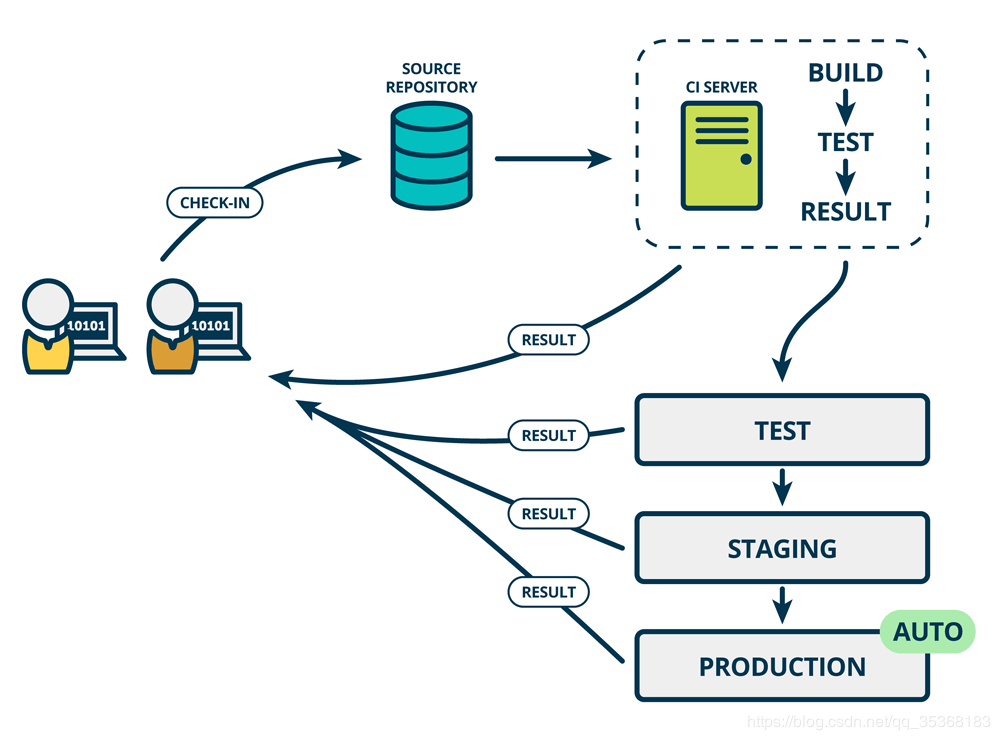Continuous integration, continuous delivery and continuous deployment
Continuous Integration
Continuous Integration: Continuous Integration, referred to as CI, is a practice of software development cycle, the code repository (Gitlab or Github), build tools (such as Jenkins) and testing tools (SonarQube) integrated with frequent code into the trunk then automatically build and test.

In fact, the key here is automated testing, this is the most difficult, because the test involves a lot of content.
Continuous Delivery
Continuous Delivery: Continuous Delivery, referred to as CD, is extended on the basis of the CI, the CI link to complete the software build and test work and the formation of a new version, then the next step is to be delivered, and where delivery is not delivery to the production environment, but a production-like environment (the STAGING), we can understand the environment or gradation advance environment, the receiving portion further real traffic test. If not, then it is deployed into production by manually. As shown below:

Continuous Deployment
Continuous Deployment: continuous deployment, referred to as the CD, it is to get through the last kilometer of the work on the basis of continuous delivery, is to deploy a manual way to upgrade the production environment to automate the deployment. And the difference between the production environment see the figure to figure in the final deployment.

reference
The Product Managers’ Guide to Continuous Delivery and DevOps
Continuous integration, continuous delivery, continuous deployment